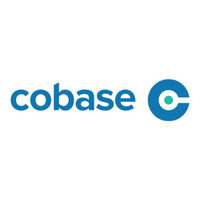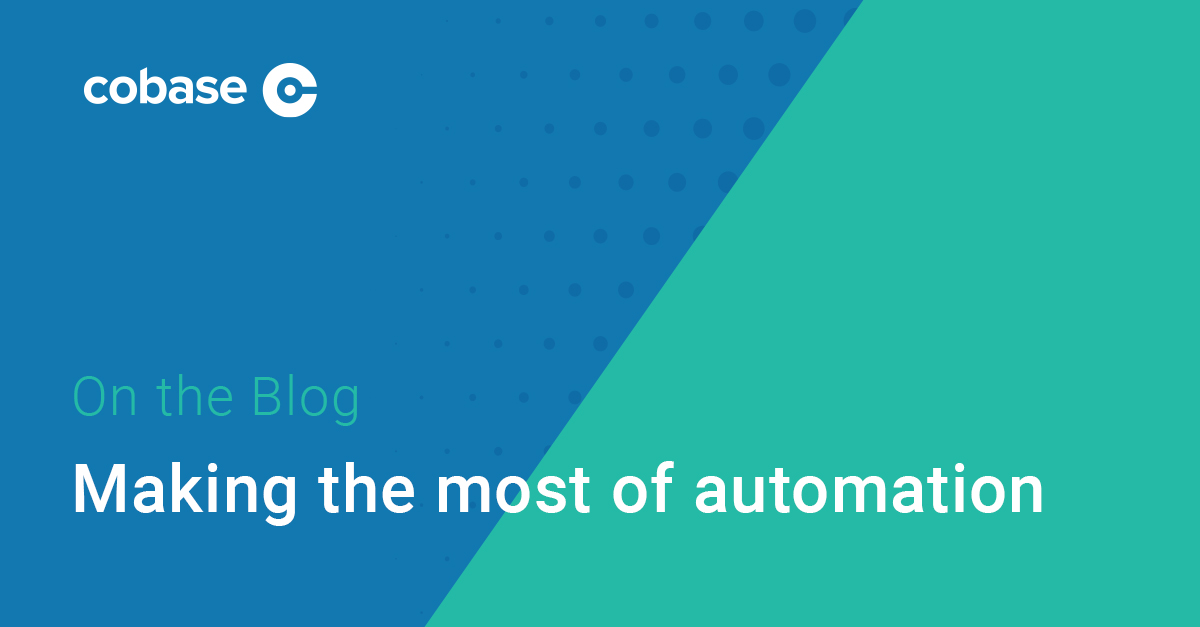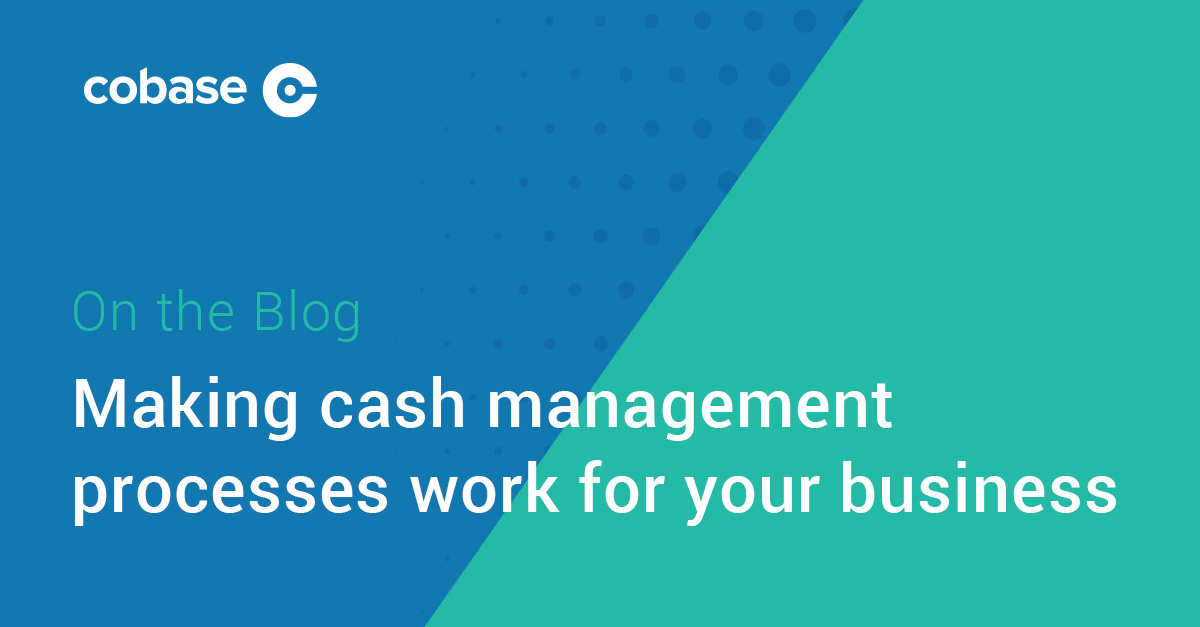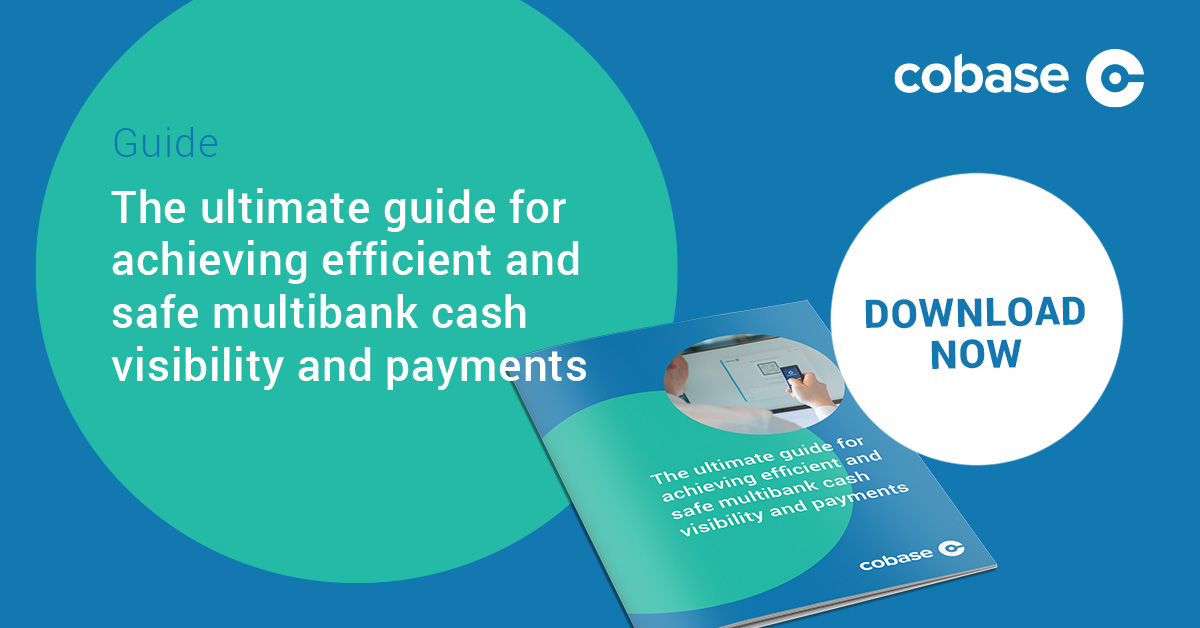Building a platform for success
11-01-2023 | Cobase | treasuryXL | LinkedIn |
Banks provide solutions to connect and integrate corporate ERP systems, most of which are based upon batches of data being exchanged between the accounting platforms of the company and the bank. However, these are bank and country-specific and not a scalable solution fit for future growth or expansion.

Also it is important to determine whether payment batches follow a consistent approval chain. Malicious activity is difficult to detect in a cumbersome and scattered ERP and bank environment so treasury teams need to have confidence that payment batches generated in the ERP system are automatically sent to the banks in the right format and in compliance with local security standards.
In the third blog in this series we explore the merits of connecting accounting systems and/or ERP systems to your bank(s) and why companies benefit from being able to execute payments from a single platform.
Merits of connecting accounting systems and/or ERP systems to your bank(s)
If the company connects its ERP system through a platform or a dedicated middleware layer, this creates a tight workflow to which consistent approvals can be applied, reducing the scope for unauthorised payments. Automatic information feeds also support the execution of sophisticated liquidity forecasting and management of foreign currency exposure.
An additional factor for corporates to consider is whether their provider will be able to move to open banking APIs once their bank(s) make them available and provide APIs to their ERP environment. Connectivity between corporate accounting software and bank portals generates a number of benefits for corporates, including the availability of balance and transaction information in real-time to enable more accurate and timely decision-making and further optimise cash and credit lines.
Multiple cash management banking relationships make managing payments and cash a cumbersome process that involves logging in and out of different bank portals and managing disparate authorisation schemes while trying to ensure that bank data and data in ERP or accounting systems are synchronised.
Most ERP systems allow for batch payments only and have no interface for individual payments, which means there is no screen where individual payments can be entered manually.
Why companies benefit from being able to execute payments from a single platform.
When treasurers are unable to send single payments out of their ERP system directly to their bank, they are required to log into individual portals to perform these payments. This can become a frustrating process when they have to look for security tokens or recall passwords that are rarely used because of the sporadic nature of the payment.
It might be tempting to assume that this is not a major issue given that these payments are not made regularly and are often of low value. However, there will be situations where high value one-off payments have to be made. Regardless of the value of the payment, it is much easier to execute it from a single platform because the user experience is the same across all banks.
In the final blog in this series we will look at the benefits of maintaining a complete audit trail of payment activities and the advantages to be gained from having a consistent payment approval workflow across business units.
The ultimate guide for achieving efficient and safe multibank cash visibility and payments
Treasury teams looking to optimise their cash management processes realise that making smart decisions requires tactical and strategic planning. However, there are a number of principles that can be applied by any business to increase the level of insight into how funds move into and out of their organisation.
That’s why we created ‘The ultimate guide for achieving efficient and safe multibank cash visibility and payments’. In this guide you’ll find questions that you can ask yourself to determine your current level of efficiency and spot the areas you might need to improve.









